The Influencing Machine
It takes me an absurdly long time to form an opinion. It took me some 20 years of writing about the media to coalesce a view coherent enough to call my own. The fact that I chose a comic-book format to present that view might seem a little peculiar to those who know me from the radio. After all, radio is the medium without pictures. But it's not really.
More than television, more than newspapers, radio creates a sense of intimacy—the illusion of a one-to-one relationship—because the listener relies on the reporter's voice to paint pictures. Voices are very personal. I thought that I could re-create radio's intimacy if I had the ability to look readers in the eye while guiding them through my media manifesto, The Influencing Machine, which starts with the invention of writing and ends in the year 2045.
Another reason for using comics: The world is full of media books with competing predictions of cyber-utopia or annihilating chaos. I steer between those shoals, and sometimes bump up against both of them. My argument (don't rejoice, don't panic) is built on many small, historical moments. I want those moments to stick with the reader. Pictures, especially the sly, evocative pictures drawn here by Josh Neufeld, are sticky.
The first excerpt, called "Objectivity," challenges two common assumptions about objectivity: that it is essential to good journalism and that it is real. It is neither. The second excerpt is a cautionary tale about numbers. There are quite a few such tales in the book about how humans are wired to absorb information that confirms their worldview, and to repel information that disputes it. The quality of that information is immaterial.
The point of the book is that the media are not the "influencing machine" of popular imagination, but rathera mirror. We can change the reflection, but it's very hard to do.
The following comes from Brooke Gladstone's new book, The Influencing Machine: Brooke Gladstone on the Media, illustrated by Josh Neufeld.
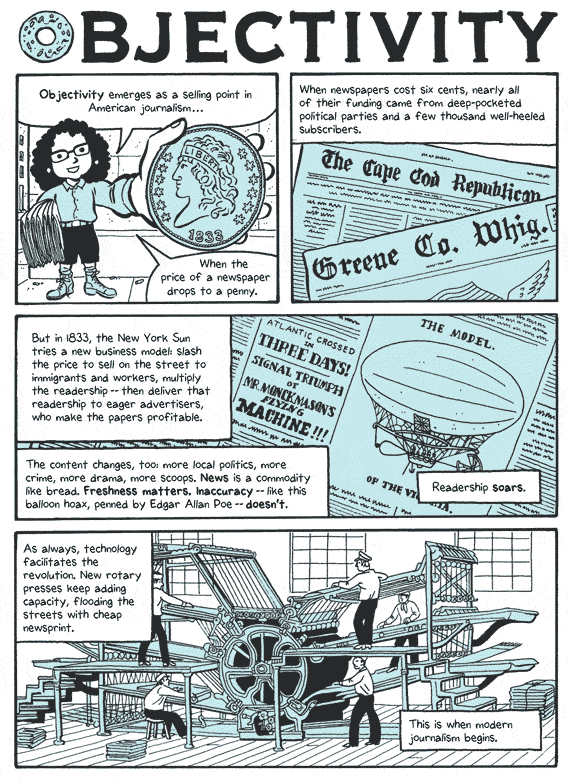

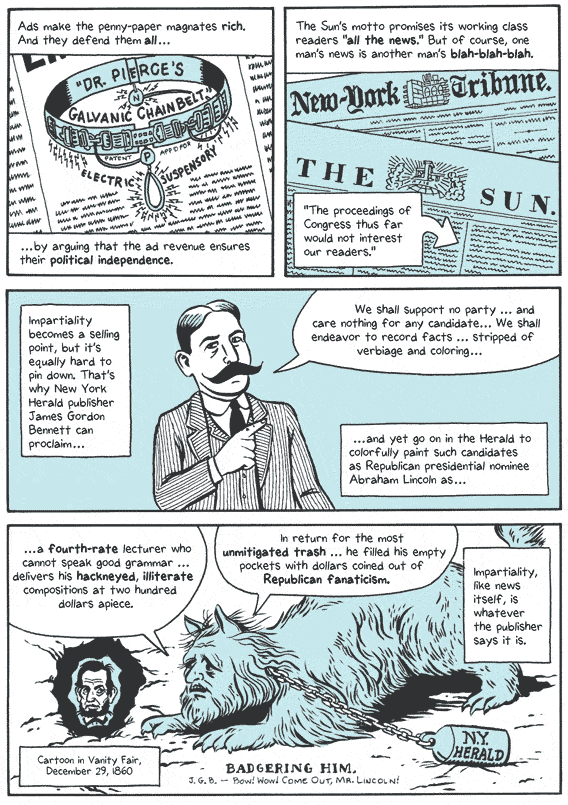

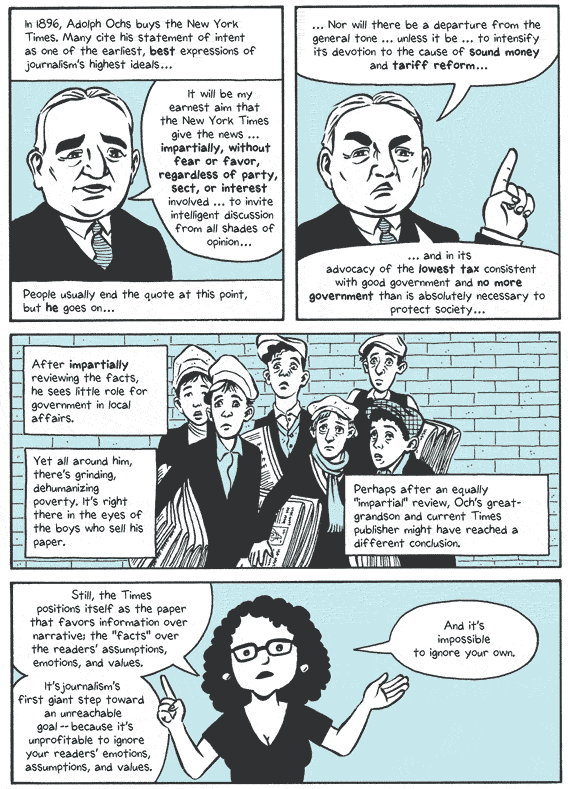

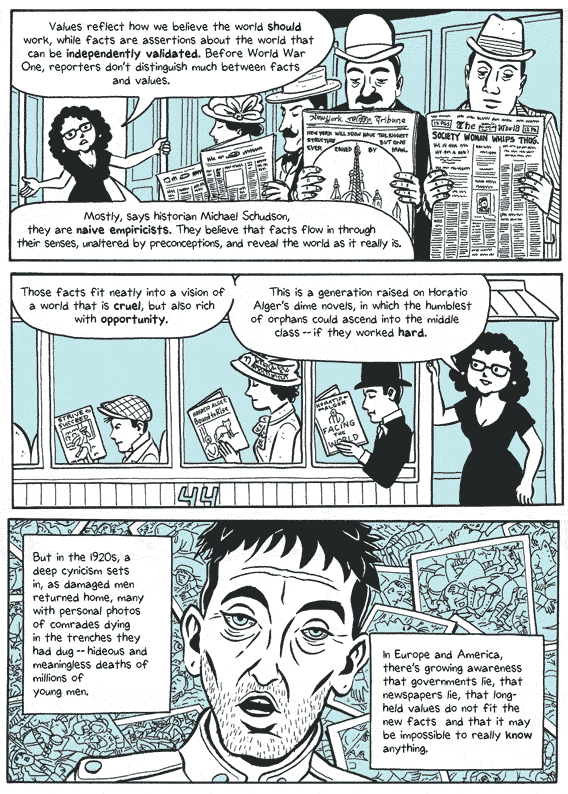

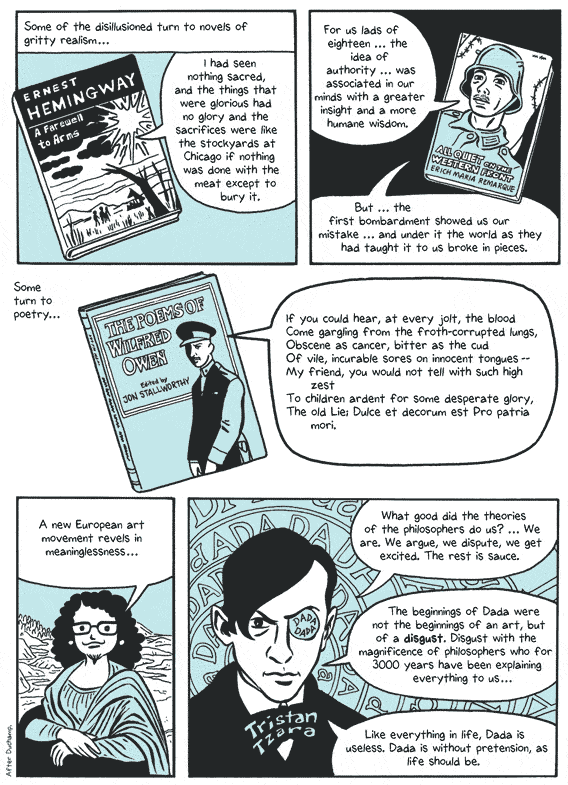

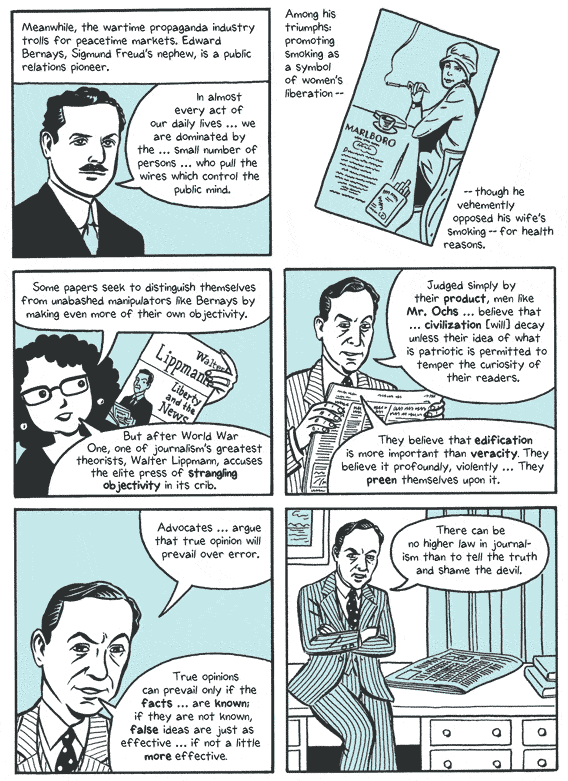

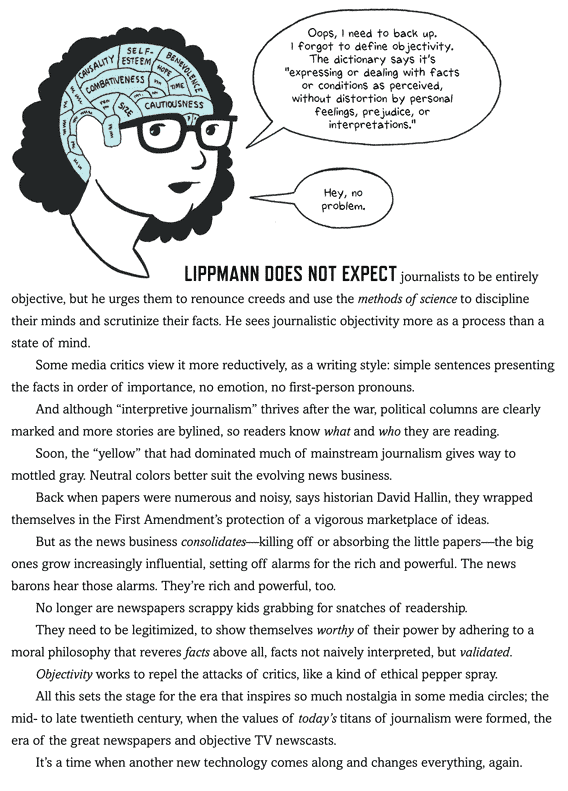

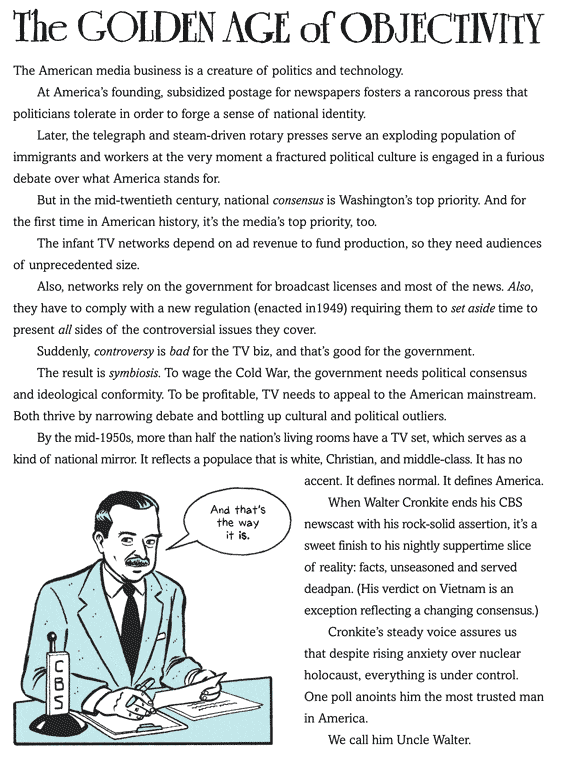

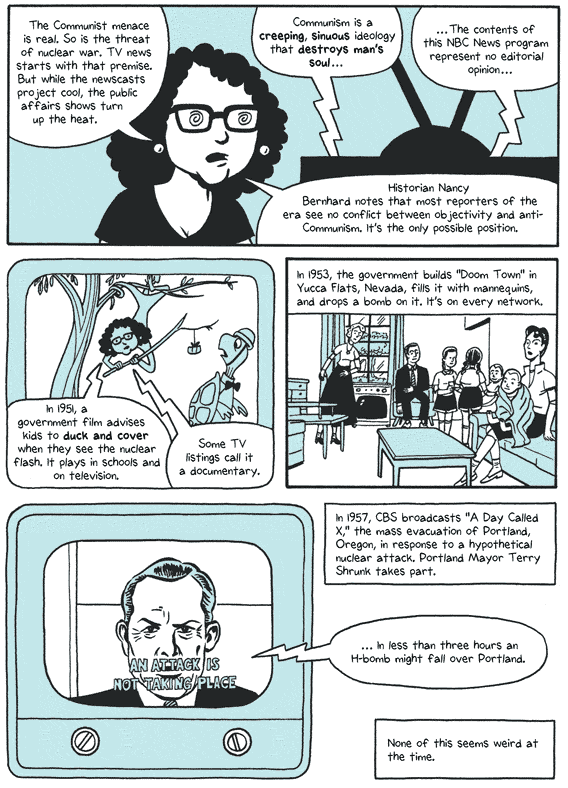

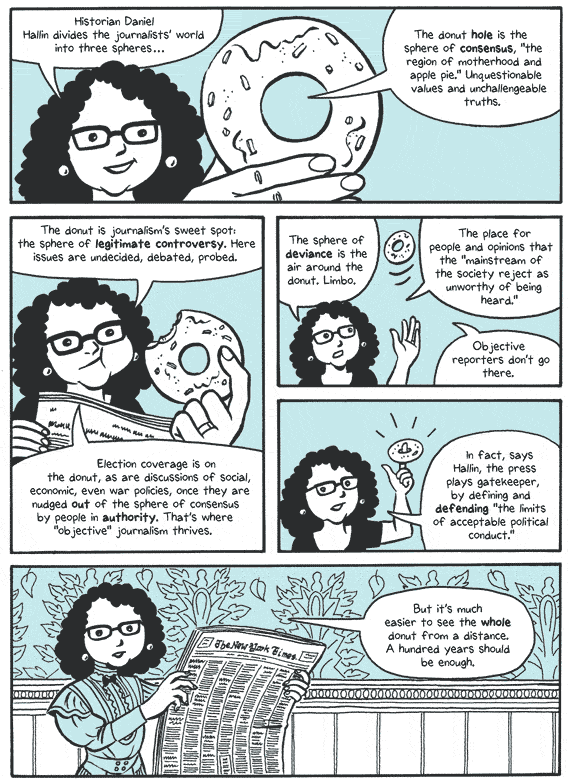

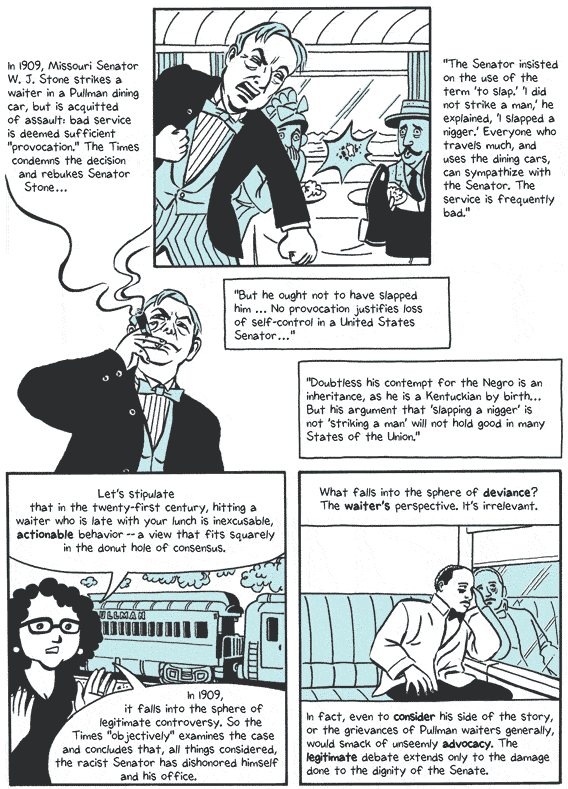

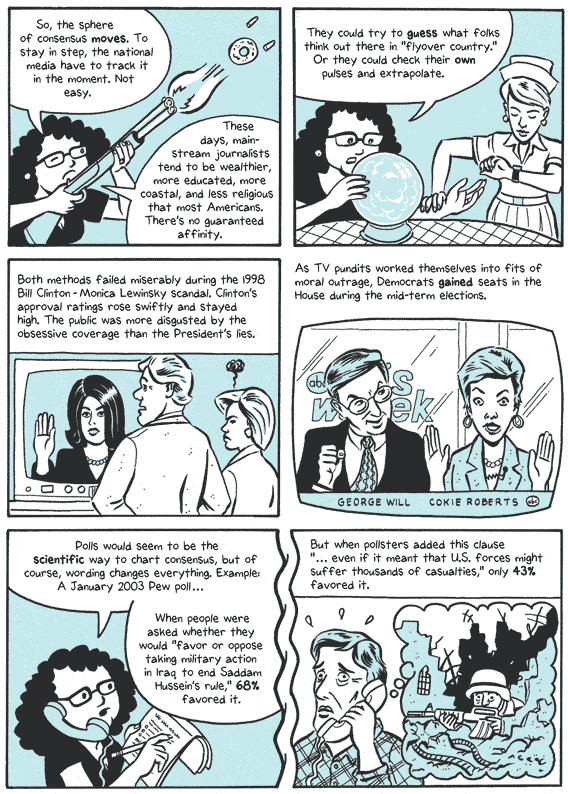

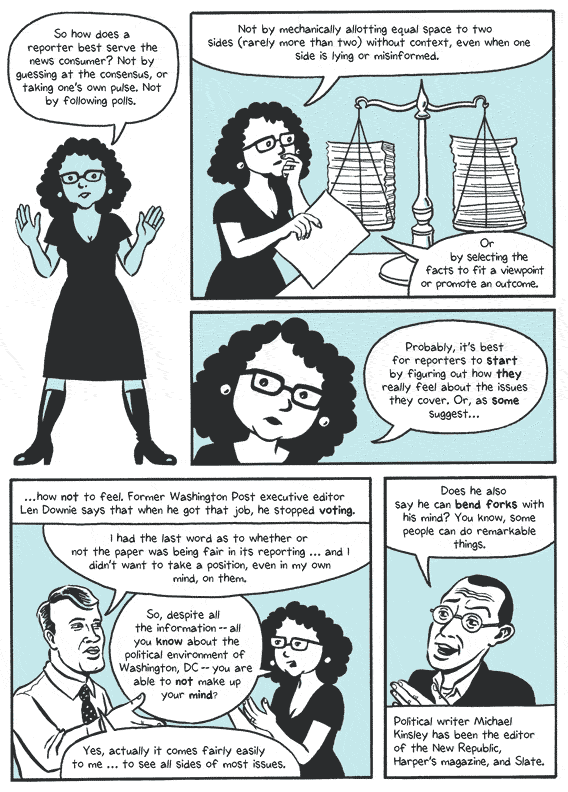



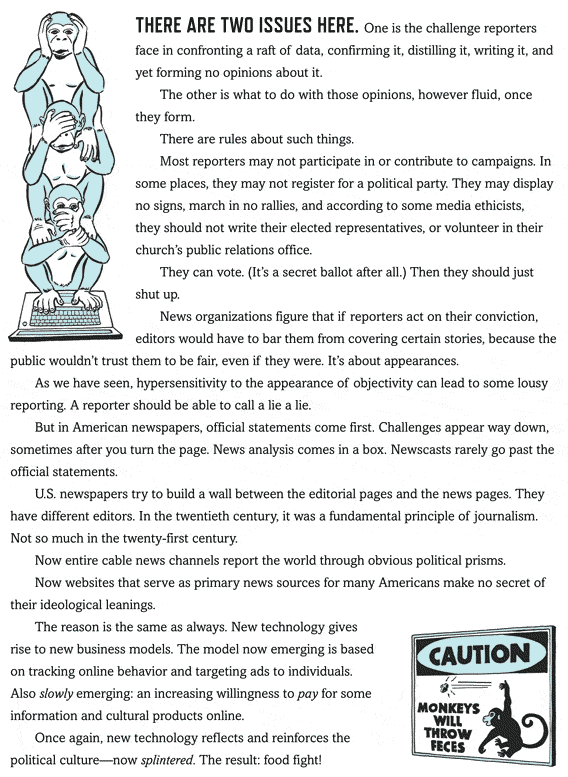
Coming Thursday: The Goldilocks Number—why the same figure pops up in media reports about pedophiles, murders, snakebites, car accidents, malaria, and everything else.